
 Flash News
Flash News
Suspected of being murdered, photo emerges of 23-year-old found dead in Shkopet lake
Theth action, resident in tears: I built on my land with my life's expenses, the state should not destroy it
Directors targeted! After Fier and Durrës, Rama arrives in Elbasan
Name/Identification of the 23-year-old found dead near Shkopet Lake
IKM action in Theth, residents come out in protest

Here are the highlights from Italy's snap general election, which returned the far-right to power, while the new government will be led by Giorgia Meloni.
1. Giorgia Meloni is expected to be Italy's first female prime minister
As head of the largest party (Brothers of Italy) in the winning right-wing coalition, Giorgia Meloni is poised to become Italy's first female prime minister.
In a highly patriarchal country whose leading political figures have been predominantly male, Meloni's victory represents a major break with the past.
In an interview before the elections, she stated that "it would be an honor for me to be the first to break this taboo in my country".
She may have received some form of support from former US Secretary of State Hillary Clinton, who said the solution to women in office represented a "step forward".
2. Italy will have its most right-wing government since World War II
Italy's new government will consist of a coalition of Brothers of Italy led by Meloni, a neo-fascist party, Matteo Salvini's Northern League and Silvio Berlusconi's more moderate Go Italy (Forza Italia).
For much of the postwar period, Italy was dominated by the now-defunct Christian Democracy, a large, conservative, pro-American party that combined more right-wing and left-wing factions.
After the Bribesville scandal of the early 1990s, Italy's party landscape changed radically, and Berlusconi emerged as a senior political figure presiding over many right-wing governments.
While it is not the first time that the far right has been in government in post-World War II Italy, Meloni himself was Minister of Youth from 2008 to 2011, it is the first time that the far right will be in charge.
3. Participation in voting has been at historically low levels
Italy has always enjoyed high levels of political participation and has had a higher voter turnout than many of its European neighbours. In 1979, over 90% of the electorate turned out to vote, and numbers remained in the high 80s throughout the 1990s.
Megjithatë, në këto zgjedhje, vetëm 64% e popullsisë me të drejtë vote votuan. Zgjedhjet e përgjithshme të vitit 2018 patën gjithashtu 73%, dhe pjesëmarrja e votuesve ka qenë në rënie për më shumë se një dekadë.
Pse është ky rasti? Pakënaqësia dhe lodhja e votuesve janë në rritje, si dhe peizazhi i paqëndrueshëm dhe në ndryshim partiak, dhe fakti që kjo fushatë zgjedhore nisi në gusht.
4. Një paraqitje e dobët për qendrën e majtë
Në muajt para zgjedhjeve, forca më e madhe e qendrës së majtë, Partia Demokratike e udhëhequr nga Enrico Letta mori 19%, duke mos arritur kështu pragun e 20%.
Koalicioni i qendrës së majtë është shumë prapa bllokut të krahut të djathtë dhe perspektivat e tij u penguan kur një tentativë për koalicion me partinë e qendrës, Veprimi, dështoi pas pesë ditësh.
The populist Five Star Movement, led by former prime minister Giuseppe Conte, is estimated to have received 13.5-17.5% of the vote, which may be slightly more than polls suggested, but is a significantly smaller figure than what it had achieved in 2018 (32.7%).
5. Is this the return of Berlusconi?
Former long-time prime minister Silvio Berlusconi may no longer be a major independent figure in the election, after all, his party is merely a 'shell' of what was once Italy's biggest political force .
But Berlusconi's support for the right-wing coalition is essential to ensure he has a majority of seats, and as such, the controversial former prime minister could still wield significant influence.
Source: Euronews
Latest news



Found dead in Shkopet Lake, 23-year-old has injuries to his throat
2025-07-09 10:41:39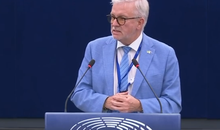


Hoxha: We will have a parliament that will surpass any comedy program!
2025-07-09 10:10:32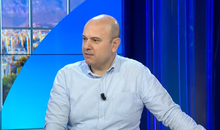

Directors targeted! After Fier and Durrës, Rama arrives in Elbasan
2025-07-09 09:53:57
Name/Identification of the 23-year-old found dead near Shkopet Lake
2025-07-09 09:42:34
IKM action in Theth, residents come out in protest
2025-07-09 09:34:54
Reasons why the EU has not imposed new sanctions against Russia
2025-07-09 09:18:35
DW: Online scams increase human trafficking
2025-07-09 09:01:29

Reported missing by his father, 23-year-old found dead near Shkopet lake
2025-07-09 08:42:13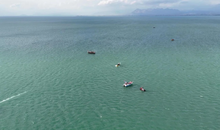
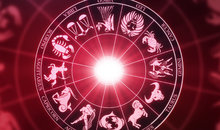
Horoscope, what do the stars have in store for you today?
2025-07-09 08:25:44
Sun and rain, Wednesday with unstable weather
2025-07-09 08:06:58
Posta e mëngjesit/ Me 2 rreshta: Çfarë pati rëndësi dje në Shqipëri
2025-07-09 07:52:02

Tabaku: Salianji bore a political cost that no one in Albania has borne
2025-07-08 22:36:15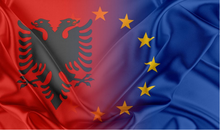


Sekretet për të shijuar verën si një ‘profesionist’
2025-07-08 21:45:06


Albania's Waste Crisis: Toxic Smoke and Deep Governance Problems
2025-07-08 21:13:07
Alarming pollution in Fushë-Arrëz, copper factory waste turns the Fan River red
2025-07-08 21:07:14

Poll/ How do you assess the Prime Minister's intervention in local government?
2025-07-08 20:40:01
28 arrested in Italy and Spain for drug trafficking, including an Albanian
2025-07-08 20:24:14
Residents clash with police in Theth: We are on our land
2025-07-08 20:11:41
Death of 27-year-old in Lipjan, Osmani: To be investigated independently!
2025-07-08 20:06:52
Trump promises US will send more weapons to Ukraine
2025-07-08 19:54:25

EU targets health, education, police and cadastre as areas of corruption
2025-07-08 19:23:34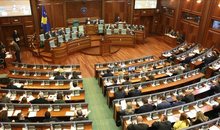
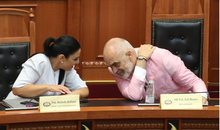

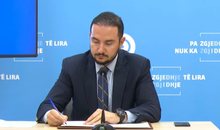

Salianji after his return: I did not oppose for functions, but for vocation
2025-07-08 18:23:15
Will he run in the 2029 elections? Here's how Salianji answers
2025-07-08 18:16:09
Boat captain drowns after diving into water to save two tourists in Shkodra
2025-07-08 18:05:12
Salianji from the DP headquarters: I brought a drug trafficker to justice
2025-07-08 18:03:26
After Fier, Rama "landes" in Durrës, dismissals expected
2025-07-08 17:53:32
Ervin Salianji arrives at the blue headquarters, welcomed by supporters
2025-07-08 17:45:12
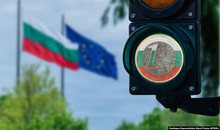
EU approves final steps for Bulgaria's Eurozone membership
2025-07-08 17:43:06

Zhupa after Salianj's release: Inspiration for every opposition member
2025-07-08 17:19:39
Actor David Killick passes away
2025-07-08 17:09:23



Threatened with dismissals, Rama arrives at the Fier municipality
2025-07-08 16:39:19
Extreme temperatures temporarily close Acropolis in Greece
2025-07-08 16:30:34

A plot of cannabis is discovered in Mazha, Kruja
2025-07-08 16:13:48

Republika Srpska allocates additional 22 million euros for lobbying in the US
2025-07-08 15:52:04

Spices that protect you from mosquitoes!
2025-07-08 15:30:03

Accident on the Vlora-Qeparo axis, one injured
2025-07-08 15:11:52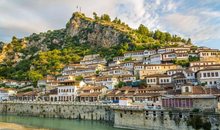
Berat, 17 years part of UNESCO's world heritage
2025-07-08 15:03:30
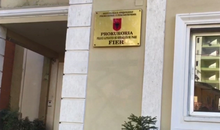

Cost of living increases, inflation rises to 2.4% in June, driven by food
2025-07-08 14:29:54
VIDEO/ Restaurant roof collapses in Italy, one victim and ten injured
2025-07-08 14:18:44
Requested release from cell, Supreme Court leaves Veliaj in prison
2025-07-08 14:07:41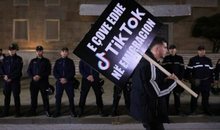
TikTok shutdown/ Austrian media: Rama benefited politically from the app ban
2025-07-08 13:48:25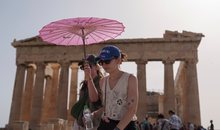
Acropolis temporarily closed due to heat
2025-07-08 13:31:09

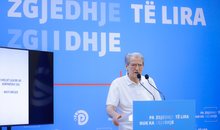
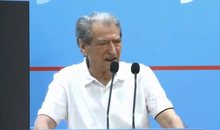
Salianj's release/Berisha: He was politically condemned by Rama and Xhafa!
2025-07-08 13:00:13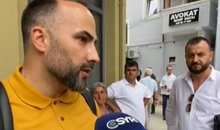

Knife attack on Peshkopia Boulevard
2025-07-08 12:44:10


Fier Court decides on the conditional release of Ervin Salianj
2025-07-08 12:15:23
Cost of living increases, inflation rises to 2.4% in June due to food
2025-07-08 12:00:16

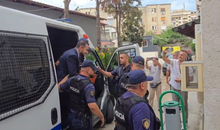
Requesting conditional release, Ervin Salianji arrives at the Fier Court
2025-07-08 11:16:36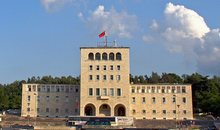
The first phase of university applications begins today
2025-07-08 11:10:52
Fire in Lura, flames endanger the National Park
2025-07-08 10:53:43
Trump warns of 35% tariffs on Serbia and 30% on Bosnia and Herzegovina
2025-07-08 10:37:32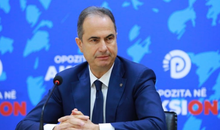
Thethi rooster and the dung cock
2025-07-08 10:24:01

Fire in Dukat endangers Llogara National Park
2025-07-08 10:01:39
International drug search: 36-year-old arrested in Durrës (NAME)
2025-07-08 09:50:48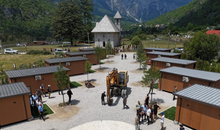
Thethi, tourists "criticize" modern trend
2025-07-08 09:39:54
Fire on Mount Dukat still active, Llogara National Park at risk
2025-07-08 09:28:12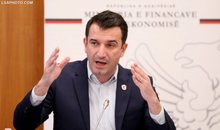
Veliaj's appeal to be heard today in the High Court
2025-07-08 09:16:02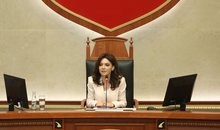
"Bad sign for democracy"/ Parliament neglects reporting by institutions
2025-07-08 09:04:56
Today's hearing at the Fier Court, Salianji requests conditional release
2025-07-08 08:56:39

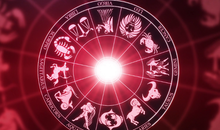
Horoscope, what do the stars have in store for you today?
2025-07-08 08:16:19
